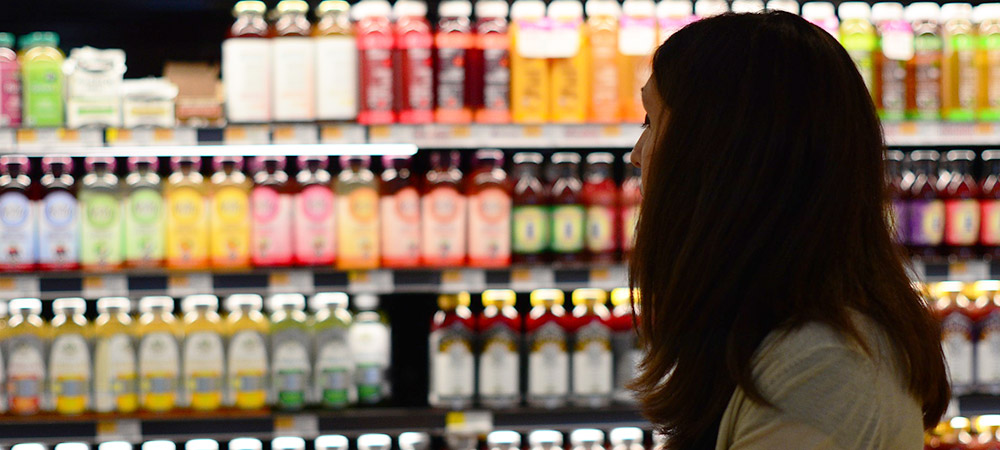What Does “May Contain” Really Mean for Food Labeling?

Somewhere between vague and confusing is a food label stating “may contain.” For people with food allergy, knowing if those crackers or that cake contain their allergen is nonnegotiable. So what’s up with the indistinct labels and confusing language? Emily Melby, RDN, at Allergy Associates of La Crosse, explains where this label came from, what it means, and how to interpret it.
Where did this label come from?
It wasn’t until 2004 that the FDA passed the Food Allergen and Consumer Protection Act (FALCPA). This act required the top eight allergens to be disclosed on food items. The top eight allergens are:
- Milk
- Soy
- Eggs
- Wheat
- Fish
- Peanuts
- Shellfish
- Tree nuts
Emily explains that the labels have to be specific, for example, the label can’t just say “tree nut,” it would have to list the specific nut, perhaps “almond.” These labels have been very beneficial for those with food allergies.
Of course, there are exceptions to this rule, too. Items such as whole fruits or vegetables, highly refined oils, meat, poultry, egg products, made-to-order food in a wrapper, and hygiene products don’t require disclosure about the top eight allergens.
“May contain,” though, is a different story. “The ‘may contain’ statements are not required under FALCPA. It’s completely voluntary,” Emily says. Many people rely on these labels to avoid reactions, and the lack of distinct labeling can be very challenging for those who are food allergic.
What does “may contain” mean?
How can a product possibly contain an allergen? The primary way this cross contact, also known as cross contamination, occurs is through the facility and the machinery of the manufacturer. Emily explains that most manufacturers make multiple products in one building; therefore a cereal that contains peanuts could be made in the same building, or on the same equipment, as a cereal that does not include peanuts. Even with cleaning or sanitizing, the cross contact can still occur and could possibly create reactions for allergic individuals.
For some products, cross contact can happen before the ingredients even get to the manufacturer. Emily explains this with oats, for example, “Many times farmers are using the same farm equipment to harvest these foods in the fields such as wheat and oats. Then they may use the same vehicle to haul it to the storage facility, where they’re storing grains in the same area before they even go to the food manufacturer.” That leaves plenty of room for cross contact, and a good enough reason to include a “may contain” label on the oats.
Should we avoid products that may contain our allergens?
So the big question is – do you have to avoid those delicious cookies that may contain your food allergen? Emily says, “It is a difficult question with no black or white answer. It’s up to your physician to decide how strictly you need to be avoiding those foods.” For those who are severely allergic, or anaphylactic, they will probably be told to strictly avoid any products that may contain your allergen. But, adjustments may be made for those with a lower sensitivity based on your testing and physician’s recommendation.
If you’re craving a specific food and want to get to the bottom of the “may contain” mystery, Emily recommends patients to reach out to the manufacturer. “Often on the manufacturer’s website, they will have FAQ’s at the bottom and typically they’ll have something about food allergies, because people are always asking,” she explains. You can also call or email the manufacturer, and Emily advises to be very specific with your questions.
What else should I know?
One very important thing to note is that manufacturers can change their ingredients at any time without a big announcement or special packaging. Emily says that the most up-to-date information is on the package itself. She explains, “You can do research online but it might not always be updated as fast. After researching, you can go to the store and purchase it, but you should definitely check the actual product.” Products you could be eating safely for years can change — even slightly — very quickly, so use caution and double check your labels.
On another note, gluten-free labels are also not required by FALCPA. “Gluten is found in wheat, rye, and barley, but wheat is the only one that’s in the top eight allergens. If a product also had barley malt in it, it wouldn’t have to say ‘contains barley’ because it’s not one of the top eight allergens,” Emily says. Some companies put their own gluten-free label on their products to signify the product doesn’t contain wheat, rye, and barley, but this label isn’t required and isn’t consistent from product to product. A best practice is to check the ingredient list on the package — just to be safe.
You should also know that there is an allergy treatment that can work toward building tolerance to the offending allergens. Allergy drops — or sublingual immunotherapy — are a safe, convenient way to treat the cause of your allergies and help you build long-term tolerance to the many of the things that once made you miserable. The La Crosse Method Protocol, which Allergychoices advocates, has been used to treat over 200,000 patients with both environmental and food allergies.
Treat the Cause
Interested in learning how personalized allergy drop immunotherapy can be used to treat the cause of your allergies? Find a provider near you who has received training and currently reports following the La Crosse Method Protocol for allergy drop immunotherapy.


